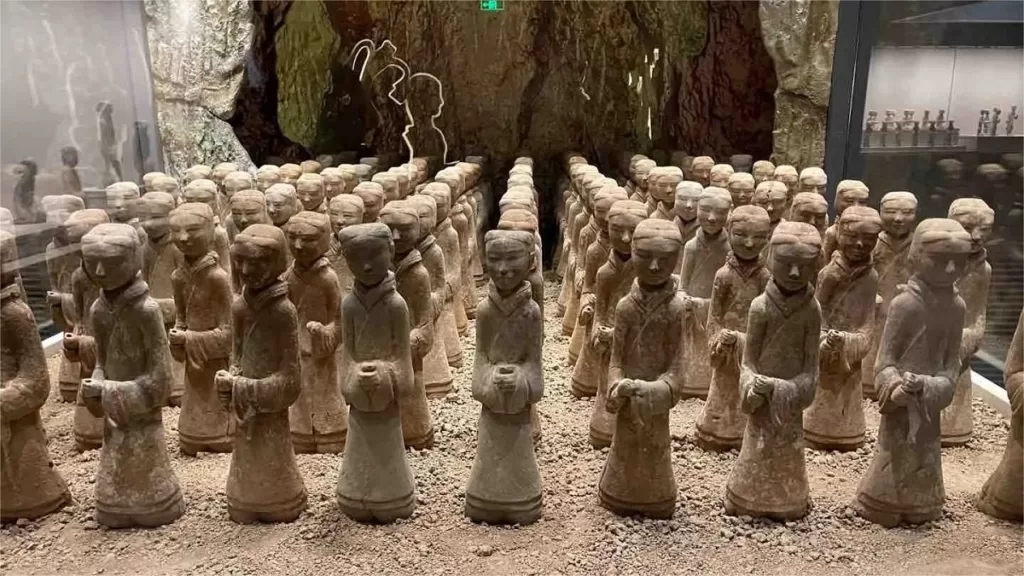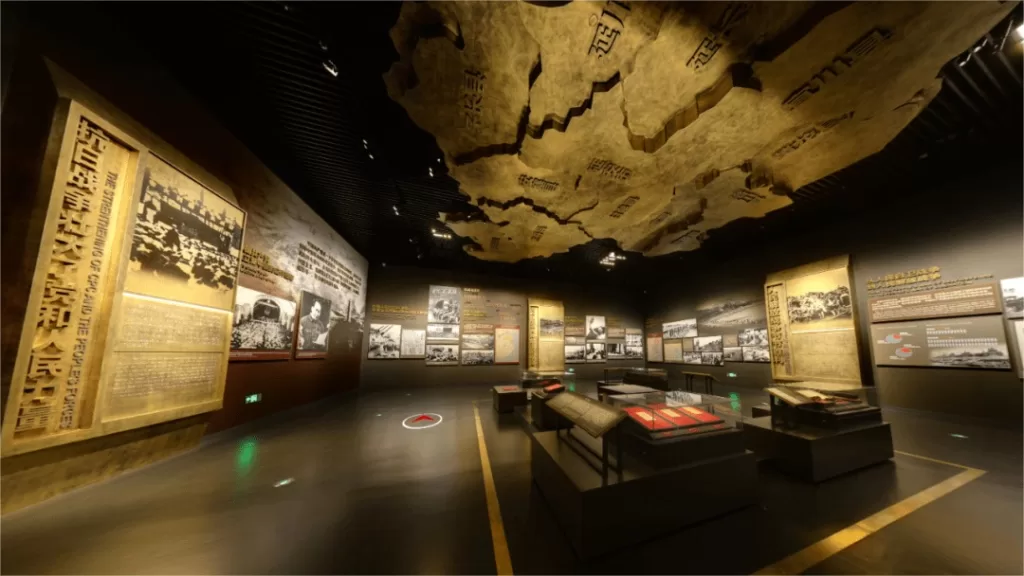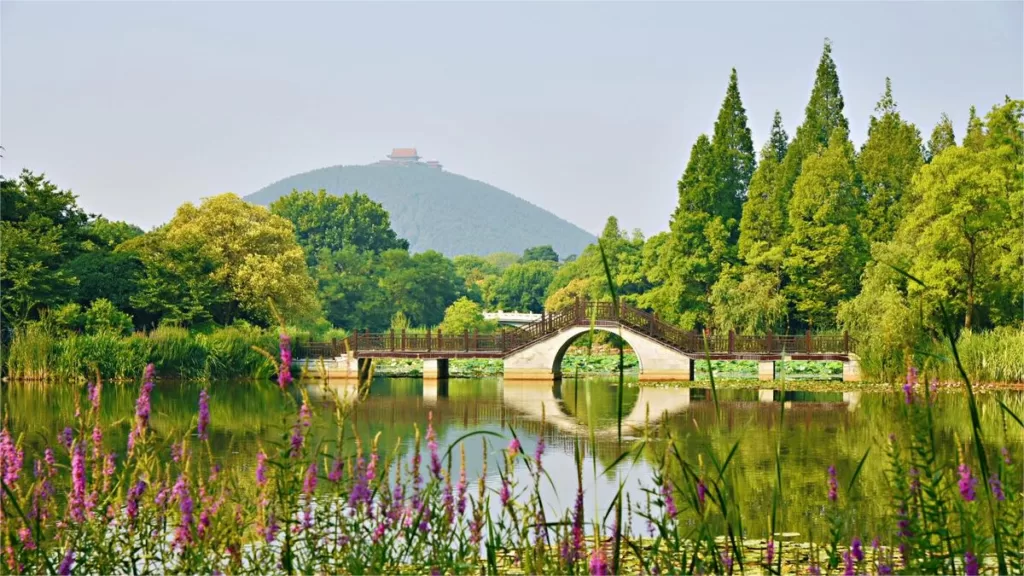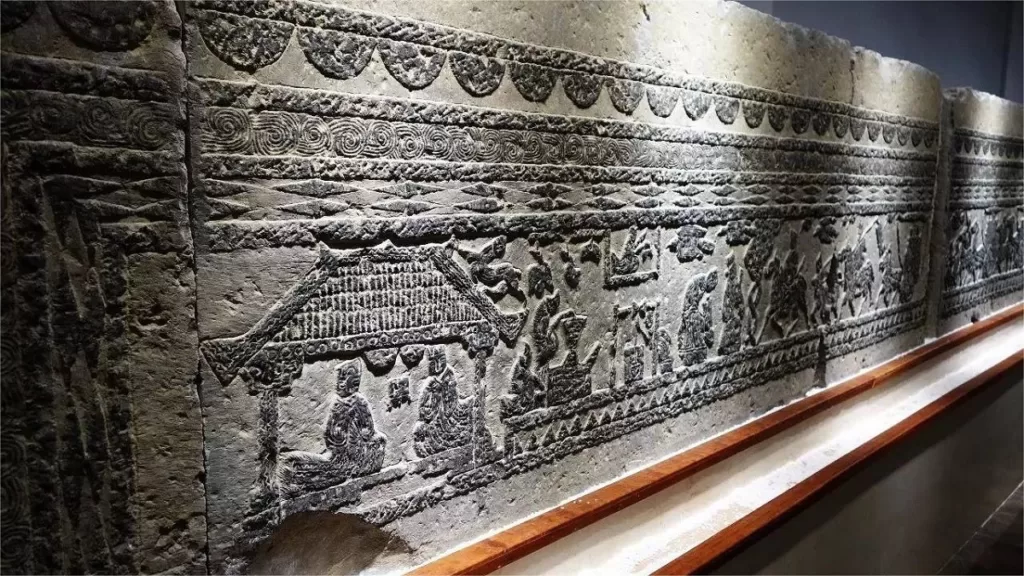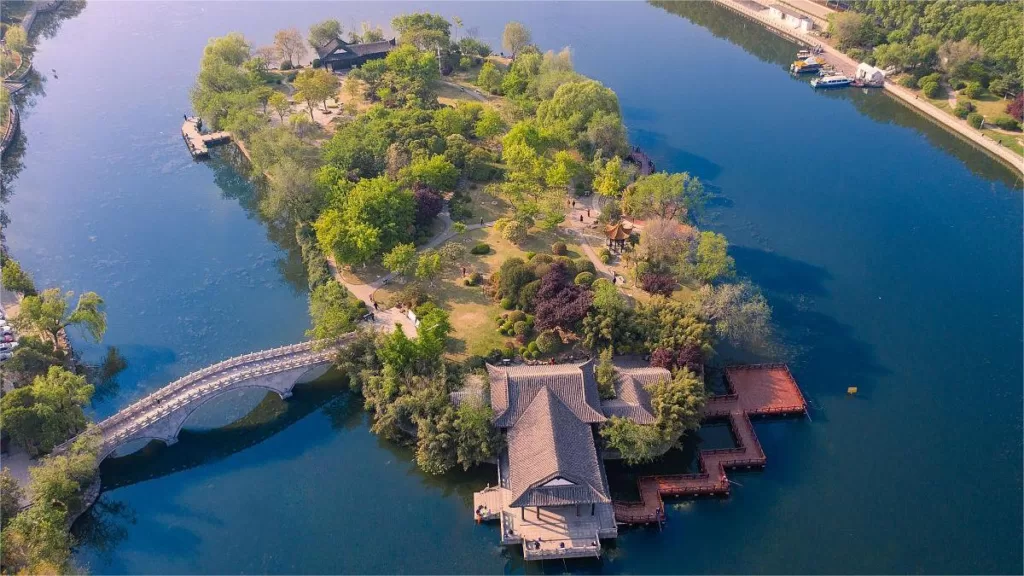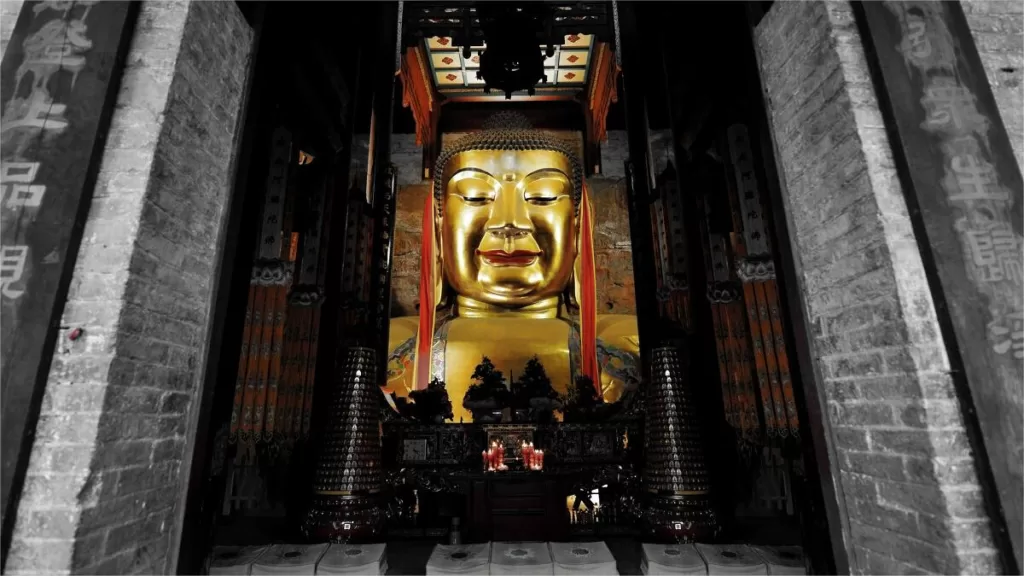Nestled at the northern foot of Yunlong Mountain, Xuzhou Museum (徐州博物馆), established in 1959, stands as a cultural gem on the former site of Emperor Qianlong’s imperial palace during his southern tour in 1757. The museum comprises four exhibition areas: the main exhibition building, the Eastern Han Dynasty Pengcheng Prince’s Tomb on Tushan, the Han Dynasty Quarry Site, and the Qianlong Imperial Palace with a Stele Garden. With a total area of 33,000 square meters, the museum boasts an architectural space of 12,000 square meters and exhibition halls covering over 3,000 square meters.
Renowned as one of the major cities back to the Han dynasty, Xuzhou Museum houses a collection of artifacts unearthed from various Han tombs. Visitors can marvel at iconic pieces such as the Golden Thread Jade Garment, Silver Thread Jade Garment, and Bronze Thread Jade Garment, offering enthusiasts a rare opportunity to witness these treasures in one place.
Table of Contents
- Basic Information
- Location and Transportation
- Sections of Xuzhou Museum
- Vlog about Xuzhou Museum
- Attractions near Xuzhou Museum
Basic Information
| Estimated Length of Tour | 2 hours |
| Ticket Price | Free |
| Opening Hours | 9.00 – 17.00; Last admission: 16.00 Closed on Monday |
| Telephone Number | 0086-0516-83804412 |
Location and Transportation
Xuzhou Museum is nestled at the northern foothills of Yunlong Mountain, an iconic natural landmark in Xuzhou. Situated at 118 Heping Road, Yunlong District, Xuzhou City, Jiangsu Province, the museum stands as a cultural beacon within the scenic surroundings of Yunlong Mountain. To get there, you can choose one of the following ways:
Bus: Take bus 38, 47, 63, 69, or 603, get off at Yunlong Mountain Stop (云龙山站), and walk about 200 meters to the northeast to reach the museum.
Metro: The closest metro station to Xuzhou Museum is Normal University Yunlong Campus (师大云龙校区) on line 2. After getting out of the station from Exit 1, walk about 500 meters to the west to reach the museum.
Sections of Xuzhou Museum
Main Exhibition Building

The heart of Xuzhou Museum boasts eight exhibition halls showcasing a diverse array of historical treasures. The exhibits include “Ancient Treasures of Pengcheng – Essence of Xuzhou Cultural Relics,” “Colorful Figurines,” “Deng Yongqing Collection of Calligraphy and Painting,” and “Qing-style Furniture.”
The ground floor’s “Weapons of Ancient Times” hall exhibits various ancient weaponry, while the Deng Yongqing Collection showcases calligraphic masterpieces by renowned artists like Bada Shanren, Qi Baishi, and Xu Beihong. On the second floor, the “Craftsmanship of Han Dynasty Jade” hall houses the prized possession of the Golden Thread Jade Garment discovered at the Chu King Mausoleum on Lion Mountain, serving as the exhibit’s centerpiece. The third floor hosts the “Colorful Figurines” hall displaying terracotta figurines from the Han to Tang dynasties. The figurines vary in style, reflecting evolving aesthetics: abstract in Han, elegant in Northern Wei, and sophisticated in Sui and Tang. Of particular note are the dance figurines unearthed from the Tolan Mountain Chu King’s Tomb, showcasing the grace and aesthetic tastes of the Han Chu state.
Additionally, the “Flowing History and Elegance” hall exhibits ceramics, bronzes, and precious metalware from the Wei, Jin, Southern and Northern Dynasties to the Qing Dynasty, while the “Qing-style Furniture” hall showcases exquisite furniture pieces.
Tushan Han Tombs

Located to the north of Xuzhou Museum, Tushan houses the Eastern Han Pengcheng Prince’s Tomb, a historical marvel documented in ancient texts like “Records of the Wei Dynasty: Gazetteer” and “Annotations on Waterways.” Folklore surrounds Tushan, linking it to Fan Zeng, a figure associated with aiding Xiang Yu in overthrowing the Qin Dynasty. However, in reality, Tushan hosts the tomb of a Pengcheng prince. Among the three major tombs discovered, only Tomb No.1 has been excavated so far. Unearthed in 1969, it yielded nearly a hundred burial objects, including silver, bronze, iron, ceramics, lacquerware, jade, and stone ornaments. Notably, an almost complete Silver Thread Jade Garment was among the significant discoveries.
Quarry Site Remnants

Nestled at the northern foothills of Xuzhou’s Yunlong Mountain, the vast Han Dynasty Quarry Site stands as a testament to ancient stone extraction practices. Excavations conducted from May to September 2004 by Xuzhou Museum’s archaeological team revealed an area measuring 200 meters in length and 150 meters in width, covering approximately 30,000 square meters. The site unveiled 68 quarries – 63 active stone extraction pits and 5 abandoned quarries. Notable discoveries included inscriptions, debris pits, and two tombs. Tools such as chisels, adzes, chisels, wedges, shovels, as well as construction materials and pottery, shed light on ancient quarrying techniques. Dating back to the Western Han period, this quarry might have operated until the early Eastern Han era, marking it as the sole pre-Han-Tang ancient stone quarry in China.
Qianlong Imperial Palace and Stele Garden

The Qianlong Imperial Palace, constructed during Emperor Qianlong’s southern tour in 1757, holds historical significance. Adjacent to it lies the Stele Garden, an elegant ancient garden featuring small bridges, flowing water, and tranquil beauty. It houses nearly a hundred tomb inscriptions and stone engravings dating from the Han to Tang dynasties, showcasing the calligraphic prowess of renowned artists from this era. This site, with its serene ambiance and remarkable collection of ancient stone inscriptions, stands as an exquisite gem within the museum’s landscape.

